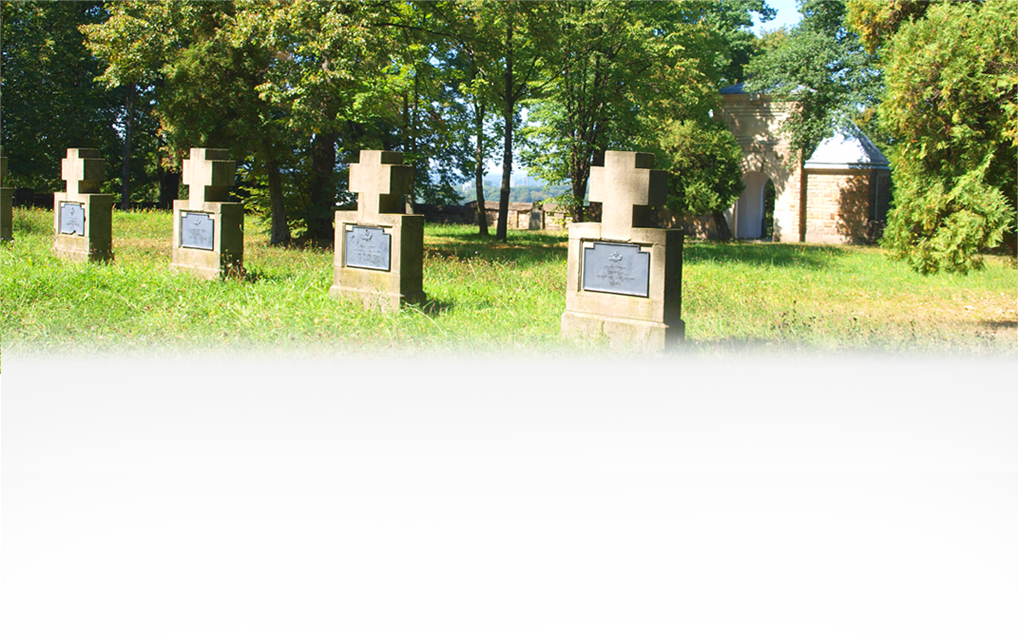The section was established on a rectangular plan and is fenced with metal segments made of crisscrossing rods, which are stretched along the longer sides between rectangular posts. The entrance, located on the north-western side, is closed with a double-wing gate of metal rods. The main element of the cemetery is a sculpture of a naked young man holding a wreath of oak leaves, which covers him on the front, set on a rectangular pedestal. The sculpture is protected by a gable roof with serrated edges, supported by four metal bars. The following dates are placed on the pedestal: “1914 1915.” The graves framed by concrete surrounds are arranged symmetrically, ten graves along the longer sides of the fence and a single one on the axis of the arrangement in front of the monument. The tombstones have the form of rectangular concrete pedestals surmounted with cast-iron Maltese or two-barred crosses.
War cemetery No. 156 was originally located in a grove near the road. The remains of the buried and the cemetery arrangement were moved to a new place in the parish cemetery in 1936. Unlike in the case of the original layout, the graves of the Austro-Hungarian soldiers are on the right, and the graves of the Russian Army soldiers are on the left from the entrance.
Ten soldiers of the Austro-Hungarian army and 15 soldiers of the Russian army were buried in one mass and 20 individual graves. The names of 81 buried soldiers are known.
